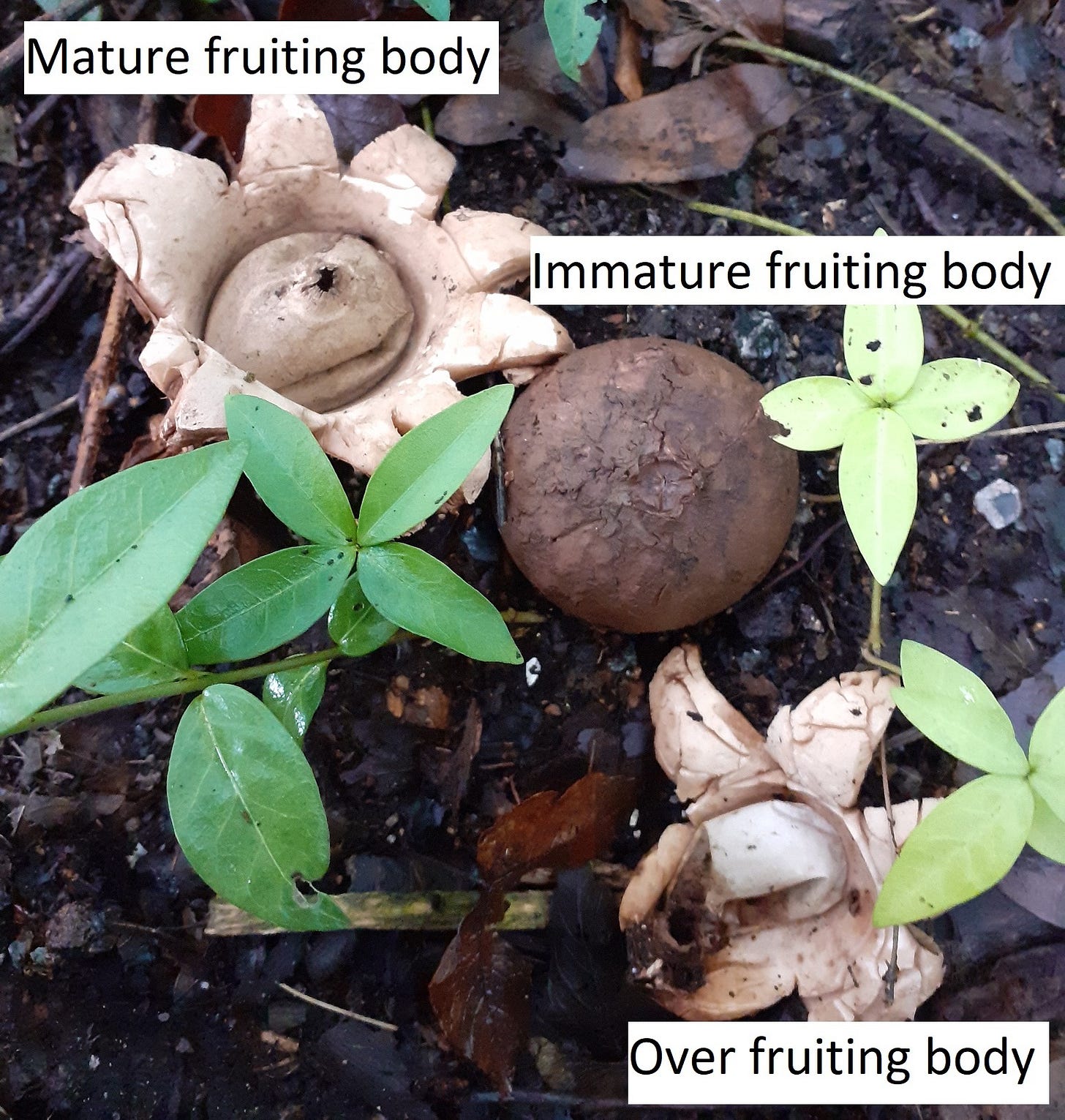I know you’re dying to know what the picture is. It’s an earth star (likely Geastrum triplex) and such a banger of a mushroom. Eminently pokeable. It was a required part of fieldwork. To poke it, that is.
Today I’m looking at trees in a small parcel of woodland for roosting bat potential. If you’ve caught one of my earlier posts you’ll know that bats love to roost in buildings, but there are some species that prefer trees. Each tree is categorised into one of four groups:
FAR- Further Assessment Required. Maybe you can’t get close to the tree or see all of the sides of it, or perhaps it’s dense with ivy or canopy leaves. It needs another assessment to assign it one of the below categories…
Negligible- The tree doesn’t have any suitable features for bats. This could be a young tree that’s just too small to have features yet, or perhaps it’s a straight up-down trunk with no features.
I-PRF- Individual Potential Roosting Features. The tree has some small features, maybe some peeling bark or small knot holes, that could support individual roosting bats.
M-PRF- Multiple Potential Roosting Features. The tree can support more than two or three bats, perhaps with a big crack feature, crevices, broken limbs or woodpecker holes. You could get a maternity roost of bats in this tree; which is why occasionally this is called a Maternity Potential Roosting Feature tree.
Bats are supposed to be the spotlight of the show today, but actually finding a bat in a tree is pretty rare, so they’re easily overshadowed (sorry, they just are). The trees themselves are stunning, and it only takes a few steps away from the car park to find what must have been a beautiful tree; it has a huge diameter, a couple of metres at least. It’s dead now, a hollowed-out trunk standing maybe 10 m tall, most of the bark gone apart from a few wrinkled patches here and there. It might have been an elm (Ulmus sp.), but I’m not entirely sure. There’s a sharp chickk noise from above, and a great spotted woodpecker (Dendrocopos major) flitts to the trunk, skirting up one side, but too wary with us standing nearby to enter one of the many circular holes I can see if I crane my head right back. This tree might be dead, but it’s brimming with life.
It’s a joy, but this woodland has more to discover. Stepping back, it’s actually at the edge of the car park where we find these earth stars, and naturally, I have to poke one. Spores fly, a cloud of brown mist that quickly turns my pen lid dull. I’ve never found an earth star before now, but they’re a jewel in the crown of deciduous woodland. Once I’ve found the first, more seem to sprout from the undergrowth everywhere, those that haven’t yet opened up like sunrays instead resembling a dark brown bulb. There’s another that’s past its best, the frond-like outer arms broken, creating a ‘collar’ around the deflated inner spore sac. These are a really cool find.
I’m supposed to be looking up, but looking down has its rewards as well. There are more trees to survey though, so eventually off I have to go again…
What can I do to help nature?
We all have an increasing amount of stuff. The UK is the fourth largest producer of textile waste in Europe, generating approximately 206,456 tonnes of textile waste annually; each person species an average of £980.50 a year on new clothing1. That's insane! Next time you see a piece of clothing you want, think about whether you actually need it, and if you can get it second-hand instead (try Vinted or Depop). Shop your wardrobe rather than new pieces; I spent a while in January cataloguing my closet and found I have over 160 items, of which I was only wearing a fraction. There's a lot of fun to be had by mixing up new outfits and pulling out things that you never wear. Nobody actually notices if you wear the same thing twice.
Welcome to my substack newsletter, Ecology Adventures. As a full-time ecologist, misadventures in nature are the bread and butter of my day to day. Some people find them rather entertaining (as do I, once I am no longer spore-ful). I aim to drop a new letter from the field at least once a month. If you enjoyed this tale, please share it with your friends.
Waste Managed.co.uk- Accessed 15/01/2025





